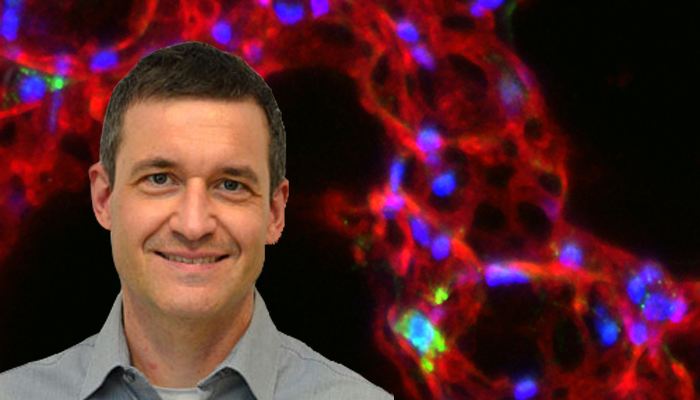IMMUNE SIGNATURE OF ASTHMA SUSCEPTIBILITY: GERHARD WINGENDER

IBG researcher Assist. Prof. Gerhard Wingender and his international colleagues describe two new factors that predict asthma susceptibility.
Asthma is a chronic disease of the lungs in which an ongoing inflammation leads to a narrowing of the airways, making the breathing difficult for the patients. This lung inflammation is often the result of an overreaction of the immune system to harmless substances, like pollen or components in house dust. Factors that increase the risk to develop asthma depend on a complex interplay of genetics, environmental factors, and the immune system.
Currently, it is not possible to predict which person likely will develop asthma, which also means that the disease is nowadays not preventable. Most studies on asthma compare patients with and without disease. However, such studies cannot uncover early signs that might predict which person will develop asthma later in life. To achieve this, researchers need to follow people over many years, to be able to compare samples from the same patient before and after asthma develops. One such attempt is the Urban Environment and Childhood Asthma (URECA) project funded by the National Institutes of Health in the USA. URECA follows children from 560 families from birth till the age of 10 and about 1/3 of these children developed asthma by the age of 7.
Dr. Wingender and his colleagues analyzed the earliest samples available from these children, which were the house dust from the living rooms of the children when they were 3 months old, and blood samples of the children at age one. Furthermore, the researchers focused on two subtypes of T cells, which are adaptive immune cells, that are often overlooked in other studies. These subtypes are called MAIT cells (short for Mucosal-Associated Invariant T cells) and invariant Natural Killer T (iNKT) cells. Unlike conventional T cells, which take a few days before they are fully trained to respond to a particular antigen, MAIT and iNKT cells are natural effector cells that jump into action immediately after activation. Furthermore, as MAIT and iNKT cells recognize components that are common to many microbes, they are often the first T cells to respond to an infection and are therefore important to shape the ensuing immune response. Not surprising then, is that animal studies indicated these cells to be important in the context of asthma, although, their role in humans is still unclear.
The team analyzed the frequency of MAIT and iNKT cells and other immune cells in the children’s and the presence of iNKT cell antigens in the subjects’ house dust. They then asked whether any of the factors correlated with an increase of asthma at age seven. While the absolute numbers of iNKT cells had no bearing on asthma risk, the iNKT cell antigenic content in house dust from the children’s houses did. Young children growing up in homes with more iNKT cell antigens where less likely to develop asthma. Furthermore, children who, at the age of one, had a higher frequency of MAIT cells were also less likely to develop asthma by the age of seven.
“We found I think two strong biomarkers in young children that help to predict their likelihood to develop asthma as they get older”, says Dr. Wingender. “First, a home rich with antigens for iNKT cells reflects an environment with increased microbe exposure and therefore protection from asthma.” This is consistent with the generally accepted ‘hygiene hypothesis’, which holds that increased microbial exposure in the first years of life is protective for asthma. “Second, having more MAIT cells is also protective. MAIT cells too can respond to microbes in the environment, which the children will inhale”, Dr. Wingender continues. “Both, the presence iNKT cell antigens in the house dust and the increased frequency of MAIT cells early in life could help skew the immune system toward an asthma-protective Th1 immune response. These data suggest that microbial components in the children’s houses activated iNKT and MAIT cells to shape the immune response early in their life in a way that protects them from asthma. We don’t know enough yet about the microbiome to know which aspects are beneficial. However, using our findings as a foundation and as we learn more, it is feasible that one day the protective components can be used as an effective therapy to prevent asthma” concludes Dr. Wingender.
The results of this study were published in the Journal of Immunology. Full citation: Shilpi Chandra*, Gerhard Wingender*, Jason A. Greenbaum*, Archana Khurana, Amin M. Gholami, Anusha P. Ganesan, Michael Rosenbach, Katy Jaffee, James E. Gern, Robert Wood, George O’Connor, Megan Sandel, Meyer Kattan, Leonard Bacharier, Alkis Togias, Anthony A. Horner, and Mitchell Kronenberg. Development of asthma in inner-city children: Possible roles of MAIT cells and variation in the home environment. Journal of Immunology, 2018, 1995-2003. (* contributed equally)